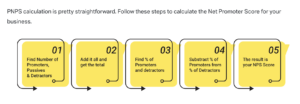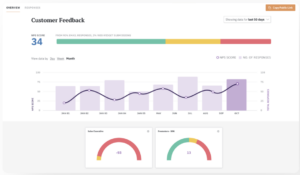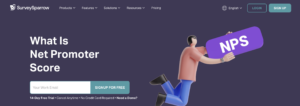Best Of
How to Turn NPS Passives into Promoters: Top 5 Ways to Checkout in 2024
Article written by Pragadeesh Natarajan
pragadeesh
13 min read
30 May 2024

You’ve probably come across the term NPS passives before. But it hasn’t meant much to you until now. You’ve focused on leveraging your promoters and detractors to grow your business.
And sure, your reasons are valid and obvious. Stop the angry, disappointed customers from leaving your business and get happy customers to promote your brand.
But what about your passive customers, who comprise a significant portion of your customer base?
Most businesses often neglect this group of people. One main reason is you do not include passive customers while calculating the NPS score. And since they’re focused on the score, it’s easy to ignore this customer segment.
This would be a sadly lost opportunity at a time when retaining customers is far more important than acquiring new customers.
In this article, we’ll explain who passive customers are, the NPS scoring system, why focusing on this group of customers is critical, and the different ways to turn passive customers into promoters. Ready? Let’s dive in.
What is the Net Promoter Score?
The NPS, or Net Promoter Score, is a metric for customer loyalty and satisfaction. Fred Reichheld introduced it in a 2003 Harvard Business Review article.
The NPS is calculated based on responses to a single question: “On a scale of 0-10, how likely are you to recommend our company/product/service to a friend or colleague?”
Respondents are categorized as follows:
- Promoters (score 9-10): Loyal enthusiasts who will keep buying and referring others, fueling growth.
- Passives (score 7-8): Satisfied but unenthusiastic customers vulnerable to competitive offerings.
- Detractors (score 0-6): Unhappy customers who can damage your brand and impede growth through negative word-of-mouth.
How is NPS Calculated?

To calculate Net Promoter Score (NPS):
- Ask customers: “On a scale of 0-10, how likely are you to recommend our company/product/service to a friend or colleague?”
- Categorize responses:
- Promoters (9-10)
- Passives (7-8)
- Detractors (0-6)
- Calculate NPS:
- Subtract the percentage of Detractors from the percentage of Promoters.
NPS = % of Promoters – % of Detractors
Who are NPS Passives?
Passives are your customers who gave you a score of 7 or 8. Passives have neutral feelings about your product or service.
They are not dissatisfied with your product and actually might like it. But they are not satisfied or enthusiastic enough to recommend it to others.
They might continue to use your product. But they’re vulnerable to competitive offerings and will shift to a competitor product if they think it’s a better deal.
The good news is that your passive customers can often be turned into your promoters with small improvements or fixes to your product or service. This process is simpler if ticketing software is embedded in your feedback system, like SurveySparrow’s Case Management.
You can sign up below to try all of SurveySparrow’s features FREE for 14 days.
A personalized walkthrough by our experts. No strings attached!
Why You Need to Focus on Your NPS Passives
You’re missing out big time if you aren’t leveraging your passive customers. Here are some reasons you need to try to turn your NPS passives into your promoters.
#1. Passives Are More Likely to Churn
Passives are open to alternatives. Your product happens to be one of the tools available to them. They’ve got plenty of other options to get their job done.
On top of that, they’ve had a neutral experience with your brand and thus have neutral feelings associated with your product. They’re indifferent to your product and lack solid feelings for it.
This indifference makes them more likely to leave than your detractors. Passives will shift to a competitor at the slightest opportunity.
According to ChurnZero, “Passives have no problem switching to a different brand if the price or offering is slightly better.”
In another study done by HBR, 20% of passives indicated they were ready to leave, while 28% of detractors expressed interest in staying.
They’ll easily switch to competitors if they offer a slightly better deal, price, or product.
#2. Passives Make Up for a Big Portion of Your Customer Segment
When you ignore the passives, you’re overlooking a large portion of your target market that’s most likely to churn
Let’s say 50% of your customers are your promoters and 20% are detractors—that means the rest of the 30% are your passive customers who are ready to leave you!
You can’t afford not to address this group of customers. Retaining your existing customers takes much less effort and money than acquiring new ones.

#3. Passives Are Not Passionate About Your Product
Unlike your detractors, your passives are not passionate enough about your product to voice their opinions.
Your detractors care enough about your product to be vocal about it. They’re vocal about your product because they have strong feelings for it.
Passives, on the other hand, don’t care. Your product is just like any other product out there. They see little or no difference between your product and other products.
This is why they are much less engaged with your product or business than your promoters or detractors.
#4. It Takes Much Less Effort to Turn Them into Promoters
Passives are customers who scored you 7 or 8.
That’s close to a score of 9 or 10 that makes your customers your promoters.
Passives think your product is good but not good enough to deserve a score of 9 or 10.
This means the effort to convert them into your promoters is much less than it would take to transform even your least angry detractors.
We’ll show you how to turn your passives into promoters later in the article.
#5. Passives Are Price Sensitive
Since your passives don’t see much difference between your product and your competitor’s, price becomes a huge factor when deciding which product to stay with or switch to.
Therefore, the most important thing you can do is to get their thoughts on your product’s pricing.
Do they feel that the price they pay exceeds the value they get? Do they think that your product is worth the cost?
The key question you must ask yourself is: What could I do to increase our product’s perceived value?
Identify the Reasons Behind Your Customers’ Passive Responses
Identifying the reasons behind your customers’ passive responses involves understanding various factors contributing to their moderate satisfaction levels. Here are some key reasons:
- Neutral Experiences: They haven’t had particularly bad or excellent experiences with the product or service.
- Lack of Strong Emotional Connection: They don’t feel a significant attachment or loyalty to the brand.
- Price Sensitivity: They are more likely to make decisions based on price, seeing similar value in competing products.
- Limited Awareness of Full Benefits: They might not be completely aware of all the features or benefits of the product.
- Openness to Alternatives: They are more likely to consider and switch to competitive offerings.
- Unmet but Not Critical Expectations: Their expectations might not be fully met, but not to the extent that they become detractors.
- Inadequate Customer Engagement: They may feel undervalued or not sufficiently engaged by the company.
- Indifference to Brand Differentiators: They may not recognize or be impressed by what sets the brand apart.
5 Ways to Turn NPS Passives into Promoters in 2024
Below, we show some top ways to turn passive customers into promoters in 2023.
Keep the Communication Open and Transparent
Passives aren’t as interested in your product as you think they are. You should avoid sounding neutral to this group of your customers.
If your message is generic, your passives will ignore it. A nondirect and transparent statement might come off as shallow and insincere.
Your passives need to know that you are serious about their concerns and are genuinely interested in solving their problems.
You need to reach out to them and ask them direct questions that would help you improve their experience with your product or service. Ask them how you can help and what they want to see in your product or service.
Question them about the unique needs they’re looking to solve with your product and how you can better serve those needs.
1. Ask More Follow Up Questions (If Needed)
Your passives might be using your product out of sheer necessity. They could seldom use your product and use it along with many other alternative solutions in the market.
Due to the above reasons, it’s easy for passive customers to completely ignore a generic question such as What is the reason for your score?
Questions like the one above might be taken lightly and neglected by passive customers. It would pay to follow up until you get the answers you seek from your inactive customers.
Here are some open-ended questions you can ask your passive customers:
- Why would you not recommend us?
- What was missing or disappointing in your experience with us?
- What is the one thing we could do to make you happier with our product?
2. Understand Where You Failed to Delight Them
While passives might not seem as crucial as your detractors, you can gain valuable insights from your passives that you can use to improve your product.
Since your passive customers gave you a score close to a promoter’s score, it really shouldn’t take much effort to turn them into advocates. A slight improvement or two might keep a passive from becoming your promoter.
For instance, a new feature might be all that they need. They might request a feature to solve your product’s unique problem.
In some cases, you might only have to make a minor tweak to an existing feature.
3. Identify the Potential Reasons for Churn
Your NPS passives are vulnerable to better deals from your competitors. So it would help if you watched what your competitors offer to lure your customers away from you.
You need to analyze your competitors frequently and determine the reasons that might lead to churn. Here are some reasons you need to be aware of:
- Aggressive pricing and discounts from your competitors.
- New features from your competitor products that might interest your passive customers.
- Bad customer service that involves inconveniences such as delay in response, low problem resolution time, etc.
4. Increase the Perceived Value of Your Product
Your passives think that there’s nothing unique about your offering. They believe they have nothing to lose if they switch to a competitor’s product.
They even think they could probably get more value from other products.
It would be best to show them your product is different and more valuable than the competing products.
Here are some ways to do that:
- Recommending certain products or features based on their unique needs.
- Personalizing their experience within your product.
- Keeping your customers up-to-date on the latest news and features.
- Solving a specific problem that they are experiencing.
How SurveySparrow’s NPS Module Can Help You Convert Passives into Promoters
SurveySparrow‘s NPS module provides several features that can help you convert passives into promoters:
- Identify your passive customers. SurveySparrow allows you to segment your customers based on their NPS score to identify inactive customers quickly.
- Understand the reasons for their passivity. SurveySparrow’s NPS module includes a follow-up question that allows you to ask passive customers why they gave you a score of 7 or 8. This feedback can be invaluable in helping you understand the areas where you need to improve.
- Take action on their feedback. Once you understand the reasons for your customers’ passivity, you can take action to address them. This could involve changing your product or service, improving customer support, or offering additional incentives.
- Track your progress. SurveySparrow’s NPS module allows you to track your NPS score over time to see how your changes impact customer satisfaction.

Here are some simple ways to use SurveySparrow’s NPS module to turn passive customers into promoters:
- Create a survey for passive customers: Ask them about their needs and experiences.
- Use follow-up questions to understand their pain points: Find out what’s stopping them from being promoters.
- Segment your passive customers based on feedback: This will help you target your solutions.
- Contact passive customers directly: Offer them solutions to their pain points.
- Track your progress and adjust as needed: See what’s working and what’s not.

Turn Your NPS Passives Into Promoters Now
A personalized walkthrough by our experts. No strings attached!
Final thoughts
You could grow your business much faster if you focused on turning your passive customers into your promoters.
Focusing on your NPS passives can prevent most of your customer base from switching to other products.
Are you focused on retaining your customers? Check out our article on how to turn your detractors into promoters.
Do you have any questions on turning your NPS passives into promoters? Are there any exciting tips or techniques you use to convert your passives into promoters? Let us know about them in the comment section below. Looking to conduct effective NPS surveys that your customers will love answering? Feel free to check out SurveySparrow.
Start 14 Days free trial

Pragadeesh Natarajan
I'm a developer turned marketer, working as a Product Marketer at SurveySparrow — A survey tool that lets anyone create beautiful, conversational surveys people love to answer.
Related Articles

Best Of
How To Create Video Storyboard: Step-By-Step Guide
9 MINUTES
23 April 2024

Customer Experience
Here's How To Design A Customer Feedback Loop That Works
13 MINUTES
23 November 2022

Best Of
What is Customer Relationship Management (CRM): The Ultimate Beginner's Guide!
13 MINUTES
25 July 2019

Employee Experience
How To Create An Effective Employee Engagement Action Plan
10 MINUTES
22 October 2021
